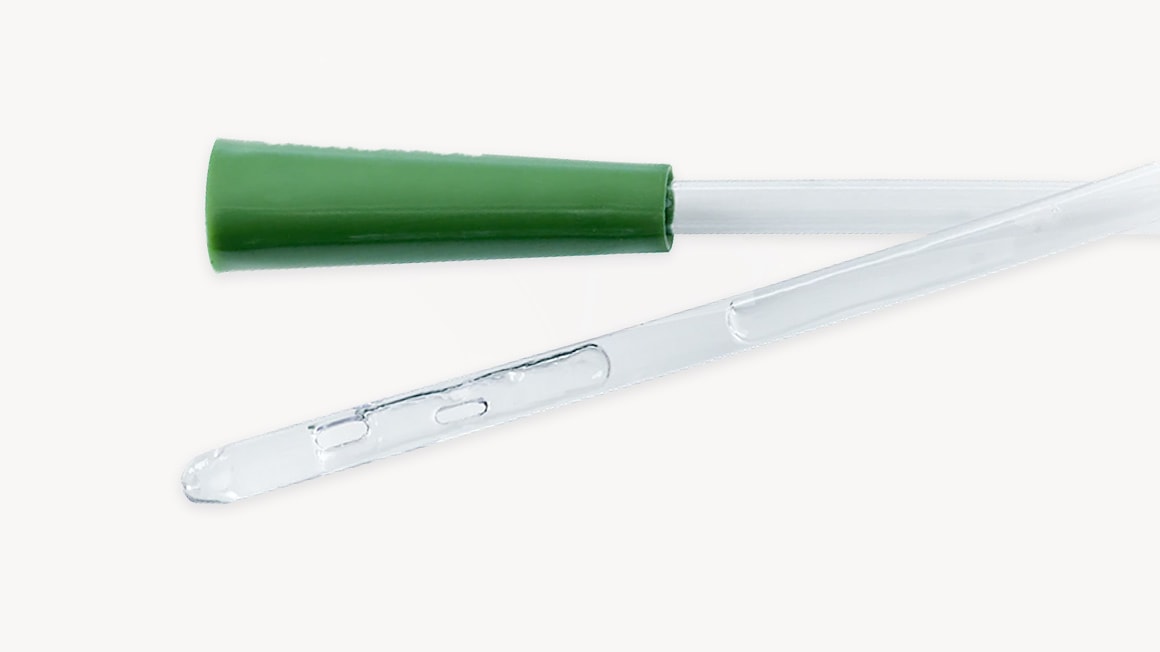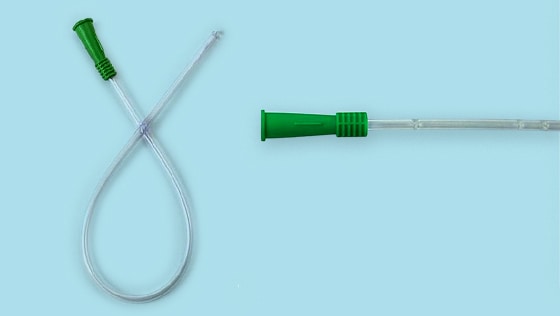Intermittent and Foley Catheter Size Guide

When you begin using an intermittent catheter or a foley catheter, your healthcare professional will help you determine which size of catheter is best for your body type and other medical needs. Most healthcare providers will offer samples of intermittent catheters to evaluate when determining the size that is most comfortable and effective for your individual use.
We invite you to contact one of our manufacturer-trained Urology Specialists to request additional samples of intermittent catheters for self-evaluation.
Do intermittent catheters come in different sizes?
Yes. Anatomical differences and a variety of other factors in body function and medical needs require intermittent catheters to be manufactured and sold in sizes. Intermittent catheters are available in different lengths and sizes suitable for men and women.
Understanding the French scale for intermittent catheters and Foley catheters
Catheter size relates to the thickness or diameter of the catheter and is measured in Charriere (Ch) or French Gauge (FG). French sizes only apply to intermittent and indwelling (Foley) catheters.
A French size is comparable to the circumference of the catheter in millimeters. “French” or “FR” is equivalent to 0.33 millimeters, which converts to .013 inch or 1/77 inch in diameter. French size does not apply to the length of the catheter.
- The average catheter size used by adult men is between 14FR to 16FR. Most men use 14FR catheters.
- The average catheter size used by adult women ranges from 10FR to 12FR. Most women use 12FR catheters.
- The average catheter size used by children (pediatric) ranges between 6FR and 10FR.
Selecting Catheter Size
When selecting a catheter for urinary drainage, the smallest possible diameter should be used that still allows adequate drainage. Using too large of a diameter (or French size) can be associated with increased bladder irritability and trauma.
Healthcare providers will typically recommend the following French sizes to adults:
- 12FR –14FR for drainage of clear urine
- 14FR–16FR for urine containing debris or particles
- 18FR or above if blood clots are present in the urine
How do I know the size of my current intermittent or Foley catheter?
Most catheter manufacturers follow a universal system of color-coding to label the catheter size, and they also clearly indicate the catheter size on the external packaging or wrapper.
Regardless of brand, most intermittent catheters have color-coded funnels that indicate their French size:
Why do I need to use the right size of catheter for my individual body type?
In their 2009 Guideline for Prevention of Catheter-Associated Urinary Tract Infections (CAUTI), the Centers for Disease Control (CDC) recommends that unless otherwise clinically indicated, individuals should consider using the smallest diameter catheter possible, that still allows for good urinary drainage, to minimize bladder and urethral trauma.
What is the difference between the French size of a catheter and its length?
While intermittent catheters and Foley catheters have French sizes according to diameter, it is also important to choose a catheter length that is appropriate for your body type and medical needs. To properly determine the right product for your personal use, you and your healthcare provider should evaluate both the width and length of the intermittent catheter that you are selecting.
Intermittent catheters are manufactured in three lengths that are designed to meet the needs of different people:
- Standard female length catheters average 7-10 inches. Anatomically, women have a much shorter urethra and can use a shorter, female length catheter. Some larger women or those with reduced mobility or a stoma may prefer to use a male-length catheter.
- Standard male length catheters average 15-18 inches. Men have a longer urethra and require a male length catheter because of this anatomical difference.
- Pediatric length catheters average 11-13 inches. Shorter length intermittent catheters may be easier for women and children to grasp and use, allowing for better flow and urine drainage through the catheter.
May I request samples of intermittent catheters to evaluate another size or style?
Yes, we are happy to assist you with catheter samples and invite you to request them here.
For further information on intermittent and indwelling catheter sizing, talk to one of our manufacturer-trained Urology Specialists and learn how trying different product samples may improve your comfort and quality of life.
Contact a specialist at 855-948-3319
Get to know Liberator™
-
How we serve our customers differently
We’re more than just medical supplies. Learn how we provide the services you need to find the best product for you.
-
Catheter Tips & Guides
Fit, comfort, discretion —with catheter care, you probably have a lot of questions. Our Tips & Guides is a great resource.
-
Contact a specialist
Our specialists are trained to address every delicate question or concern.
Call now: 855-948-3319






